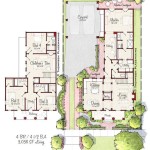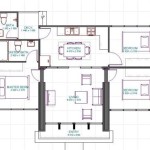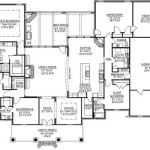Affordable Homes Planning: A Comprehensive Overview
Introduction
Affordable homes are essential for creating inclusive and sustainable communities. They provide individuals and families with decent and affordable housing, fostering economic mobility and social well-being. Planning for affordable homes is a multi-faceted process that involves a range of considerations, from land use policies to financing strategies.
Key Definitions
To ensure a common understanding, it is crucial to define the key terms associated with affordable homes planning:
- Affordable Housing: Housing that is accessible to households with incomes at or below a specific percentage of the median income in a given area.
- Low-Income Housing: Housing designed for households with incomes below a certain threshold, typically 50% or 60% of the median income.
- Workforce Housing: Housing that is affordable to individuals earning the median income in a given area.
- Inclusionary Zoning: A zoning policy that requires developers to include a certain percentage of affordable units in new residential developments.
- Community Land Trust: A non-profit organization that acquires land and develops affordable housing, maintaining ownership of the land to ensure affordability in perpetuity.
Components of Affordable Homes Planning
Effective affordable homes planning encompasses several key components:
- Needs Assessment: Identifying the demand for affordable housing in a specific area, considering factors such as population growth, income levels, and housing market conditions.
- Land Use Policies: Establishing zoning regulations that promote affordable housing development, including density bonuses, reduced parking requirements, and inclusionary zoning.
- Financial Assistance: Providing financial incentives to developers and homeowners, such as low-interest loans, grants, and tax credits, to make affordable housing production and ownership more feasible.
- Community Engagement: Involving residents, community organizations, and stakeholders in the planning process to ensure that affordable housing developments are responsive to local needs and concerns.
- Preservation and Rehabilitation: Preserving existing affordable housing stock and rehabilitating older buildings to maintain affordability and prevent displacement.
Benefits of Affordable Homes Planning
Investing in affordable homes planning offers numerous benefits to communities:
- Economic Growth: Affordable housing attracts and retains workers, stimulating economic activity and job creation.
- Social Equity: Ensures that all residents have access to decent and affordable housing, reducing homelessness and promoting social inclusion.
- Improved Health Outcomes: Affordable housing contributes to better health outcomes by providing stable and quality living environments.
- Community Stability: Affordable homes help to stabilize neighborhoods and reduce residential turnover, promoting a sense of community and belonging.
- Environmental Sustainability: Affordable housing often has a smaller environmental footprint compared to larger, single-family homes, promoting sustainable urban development.
Challenges in Affordable Homes Planning
While essential, planning for affordable homes presents several challenges:
- Cost of Land: Acquiring land for affordable housing development can be expensive, especially in high-cost areas.
- NIMBYism: Opposition from local residents to affordable housing developments, often due to concerns about property values and neighborhood character.
- Funding Constraints: Securing sufficient funding for affordable housing production can be a challenge, given competing priorities and limited resources.
- Zoning Restrictions: Restrictive zoning laws and height limits can hinder the development of affordable housing, especially in sought-after areas.
- Maintenance and Preservation: Ensuring the long-term affordability and habitability of existing affordable housing stock requires ongoing maintenance and preservation efforts.
Conclusion
Affordable homes planning is a critical component of comprehensive community development. By adopting inclusive land use policies, providing financial assistance, engaging communities, and prioritizing preservation and rehabilitation, communities can create a more equitable and sustainable future for all residents. Overcoming the challenges associated with affordable homes planning requires collaboration, innovation, and a commitment to social justice.

What Is Affordable Housing Housingdata Org Directory Of Al

Planning For Affordable Housing Land And Supply Levers

Affordable Housing Wikipedia

What Is The Definition Of Affordable Housing Your Harlow

What Is Affordable Housing And Why It So Important To London Urbanist Architecture Small Company

Will Today S Changes Move The Dial On Affordable Housing

What The Housing And Planning Bill Means For Definition Of Affordability Resource

Affordable Housing Tag Archdaily

Affordable Housing An Update For Residential Developers Douglas And King Architects

Affordable House Plans Home Designs The Designers








